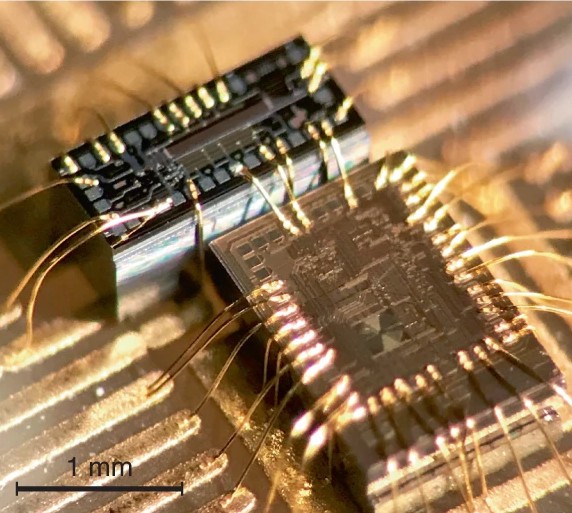
Many emerging technologies rely on high-quality lasers. Laser-based LiDAR sensors can provide highly accurate scans of three-dimensional spaces, and as such are crucial in applications ranging from autonomous vehicles to geological mapping technologies and emergency response systems. High-quality lasers are also a key part of the high-speed, high-volume data centers that are the backbone of the internet.
When assessing the quality of a laser, researchers look to the noise in a laser’s frequency, or the number of times the laser’s light wave toggles in each second. Low-quality, “noisy” lasers have more random variations in those toggles, making them useless for systems that are meant to return accurate measurements or convey densely packed information.
At present, lasers with adequately low frequency noise are bulky, expensive and an impractical choice for mass manufacturing. Penn Engineers have set out to solve this problem with a device called a “phase noise filter” that can turn low-cost, compact lasers into those suitable for LiDAR and more.

Firooz Aflatouni, Skirkanich Assistant Professor in Electrical and Systems Engineering, is an expert at combining photonic and electronic elements on single microchips, getting the most out of both systems. Now, he and lab member Mohamad Hossein Idjadi have applied this expertise toward reducing low-cost lasers’ frequency noise, achieving the same, if not better, performance as the larger, more expensive lasers.
Aflatouni and Idjadi published a study outlining the performance of their filter in Nature Photonics.
Aflatouni and Idjadi had previously published research on how a similar electro-optic system could be used to reduce noise in a low-cost laser’s frequency by forming a loop around the laser, feeding back the laser noise to itself. Now, they have shown how their new, three-square-millimeter filter chip can take the output of low-cost laser chips and convert it such that it has the same frequency noise as the expensive, state-of-the-art lasers that are hundreds of times bigger and significantly more expensive.
As an important advantage over their previous work, the implemented filter operates independently of the laser chip and thus can work with many different types of lasers.
Because a laser’s frequency corresponds to the number of times it toggles in a second, it is also reflected in its tone, or color.
“The highest-quality red laser, for example, would generate a single, pure red color at its output. That means its frequency can be represented with a thin line on the color spectrum corresponding to that exact tone of red,” Aflatouni says. “In practice however, due to noise and other factors, lasers may generate multiple closely packed tones, resulting in a thicker line on the spectrum. The width of this line, also known as the laser linewidth, is therefore a way of measuring laser performance; the thinner the line, the closer it is to an ideal single-color laser.”
Narrow linewidth lasers are essential in many applications such as communication and LiDAR.
“For example, in an advanced type of LiDAR, so-called ‘coherent’ LiDAR, the achievable range is inversely proportional to the laser linewidth; the lower the linewidth, the higher the range,” Aflatouni says.
Like their previous work, Aflatouni and Idjadi’s new filter chip utilizes a feedback loop system to lower the input laser’s linewidth.
“Our implemented chip measures the noise that broadens the linewidth, amplifies it and subtracts it from the laser output light in a loop, ultimately narrowing its linewidth,” Idjadi says.
Since their filters could be incorporated into existing manufacturing processes for the laser chips found in fiber-optic modems, these laser systems would also be considerably more cost-effective for mass production than their larger counterparts. This technology could enable low-cost, compact LiDARs and hand-held diagnostic systems, and will reduce the size and expense of high-data-rate optical communications systems.
This research was supported by DARPA under contract number HR0011–19–2–0013. The CMOS chip fabrication was supported by MOSIS Services.
